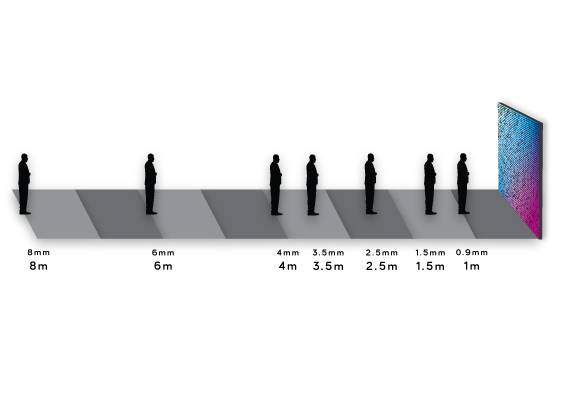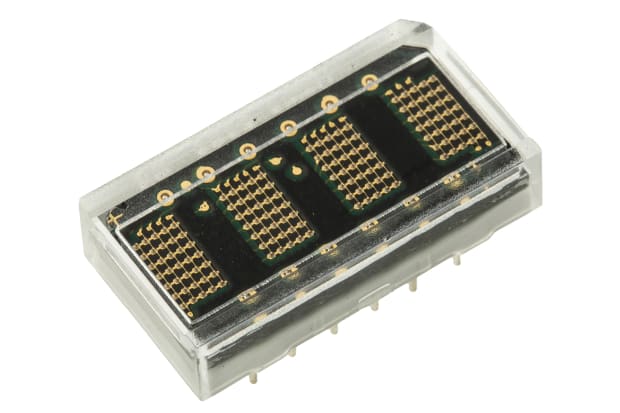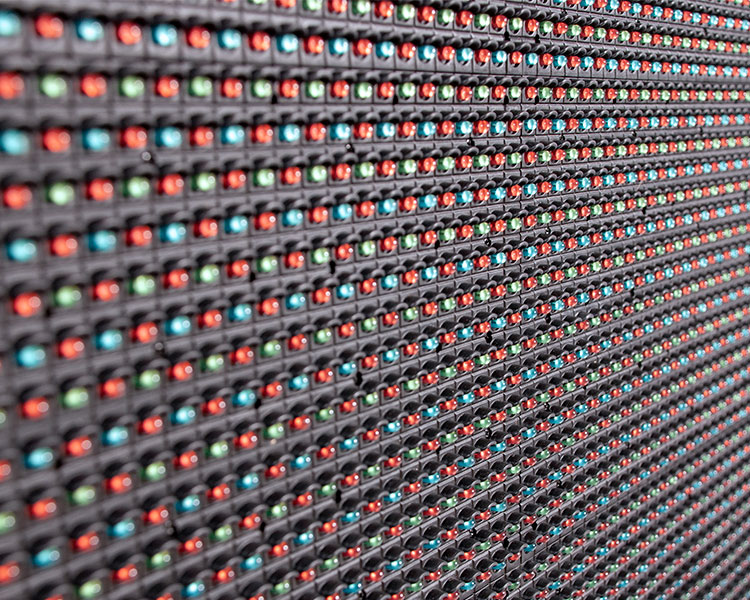It is essential to search for displays with LEDs that are long-lasting and resistant to weather particularly when they are going to be used outdoors and in areas with high traffic. Why are they so important?
1. Longevity and Cost-Efficiency
Durability - Durable LED displays have been developed to resist physical stress like vibrations, impacts or any other mechanical stress. The display's durability is high, which means it will last longer, reducing the need for frequent repair or replacement. This means greater efficiency over the long run.
Application: If the exhibit is in an environment which is susceptible to being damaged (such as public spaces sporting venues, parks or rental markets) it is vital to have durability to make sure that your investment lasts.
2. Outdoor Performance
Weather Resistant: Outdoor LED screens are constantly subject to various weather conditions that include snow, rain, wind, and temperatures fluctuations. Displays that are weather-resistant are designed to work reliably in the conditions and without degrading performance.
IP Rating: IP rating is the protection level from dust and moisture. For outdoor displays, at least IP65 (protection against dust and water jets) is recommended. This ensures that the display will withstand harsh weather without short-circuiting.
Resistance to weather is vital for outdoor installations such as stadium screens or digital signage. If a screen malfunctioning in bad weather conditions, this could cause costly repairs and interruptions.
3. Resistance to temperature
LED displays are susceptible to extreme temperatures. Hot and cool they could affect the performance of their display. High-quality displays are designed to function within a broad temperature range, usually with built-in heating or cooling systems to ensure maximum performance.
Application: For areas that have extreme temperatures, like hot deserts or cold winters in the north selecting a display that can withstand temperatures will ensure continuous operation all entire year.
4. and Moisture Protector and Moisture Protector
Waterproofing: LEDs with waterproof coatings stop moisture from entering the display which could cause short circuits and damage to the internal components. This is particularly important in environments with high humidity or heavy rainfall.
The installation of waterproof displays near coastlines or water bodies is crucial to extend the life span of the display as well as prevent malfunctions.
5. UV Protection & Sunlight Durability
UV Resistance: Prolonged exposure to sunlight can result in discoloration and degrading of display materials. UV-resistant displays have been treated to resist the damaging effects from ultraviolet rays. They keep their appearance and function with time.
Application: If the display is exposed to direct sun, or in bright surroundings where it could be installed, UV resistance can help to maintain image quality and avoid fading.
6. Safety and Compliance
Fire Resistant: Certain settings require display structures to be fire-resistant in order to meet safety standards. This is especially important in indoor settings where high usage is common, like malls and concert venues.
Application: Ensuring the display is in compliance with the relevant safety standards not only protects the investment but also helps in complying with local regulations, avoiding potential legal issues.
7. Reduction in downtime and maintenance
Low Maintenance. Displays that can withstand the weather and are resistant to environmental elements require less maintenance. This reduces both maintenance costs and downtime.
Application: In applications that require minimal maintenance, for example, emergency information or transportation hubs, where interruptions could be disruptive or costly durability and weather resistance will ensure the display's operation.
Conclusion:
Weather resistance and durability are vital to ensure the durability, reliability and value of LED display, specifically in outdoor or high-stress environments. These elements protect your investment because they ensure that the display will stand up to extreme conditions and decrease the requirement to fix it. They also ensure a consistent performance. For applications that are heavily affected by environmental conditions It is crucial to consider the durability of the display and its weather resistance when evaluating LED displays. See the most popular creative led displays for site advice including led panel transparent, led display rental, outdoor display led, video wall tv, led wall panels, led board rental, video wall tv, display device, church video wall, led wall panels and more.

How Important Is Weight And Portability In The Research Of Led Displays?
When researching LED displays, weight and portability are key aspects to consider particularly in applications that require flexibility as well as ease of installation and transportation. These aspects are crucial:
1. Easy Installation and Setup
Weight Displays with LEDs that weigh less are simpler to install particularly when they require to be hung on walls, ceilings or any other structure. The installation of massive displays can be difficult and costly as they require strong support systems.
Portable displays facilitate easy setting up and taking down. This makes them perfect for temporary installations, tradeshows and other events. They're lightweight and easily transportable and reduce the amount of time it takes to set up each display.
2. Renting and staging
The lightweight and portable LED panels are vital in the rental market and for staging, where displays are frequently relocated. These panels allow for quicker time between events, less transportation costs, as well as a reduced risk of damage in handling.
Modularity. LED portable displays feature modular designs which make them easy to disassemble and put back together. This flexibility is essential for modifying display configurations to can meet the requirements of various events.
3. Structural Requirements
Support Structures. LED displays that weigh more require more robust and complex mount structures. This could increase the overall cost and make the display more complex. Contrary to bigger displays, simpler, cheaper structures can accommodate these displays, allowing them to be used for various settings.
Venue constraints: Certain venues might have weight limitations specifically for ceiling wall or ceiling mountings. Selecting a light-weight display will enable the display to be accommodated within these limitations.
4. Transport and Logistics
Shipping and handling costs are directly influenced by the weight of LED display. Lighter displays are less expensive to ship, particularly when they are used for large-scale deployments and international transportation.
Storage and Handling Lightweight, portable display units are easy to keep in storage. They also require less space and logistical process can be made simpler, which is vital for companies that have to move displays from one place to another.
5. Flexible Utilization
Configurability. Portable, lightweight displays typically have modular design and can be configured with various sizes and shapes to suit the requirements of different applications. This is especially beneficial for creative installations where the flexibility is essential.
Applications Versatility: These displays can be used in a variety of settings, from small pop-ups to massive outdoor concerts, providing versatility that heavier, more cumbersome displays cannot match.
6. Safety Considerations
Lower Risk: Displays that are lighter pose less risk during installation and handling, reducing the likelihood of injuries or damages to the display itself. This is particularly important in environments where the screen will be regularly altered or moved.
Compliance: In some cases safety regulations can dictate the weight limit for displays especially in public spaces. It is essential to ensure that the display is in compliance with all the requirements listed above in order to avoid problems with compliance.
7. Energy Efficiency
Although not directly related to the weight of the display Energy-efficient displays are typically designed with light display in mind. Displays with LEDs that are portable consume less power, which can be an advantage for locations that are not able to use electricity, or for areas where the operating expenses are significant.
Conclusion:
LED displays need to be lightweight and portable, particularly in environments that require frequent movement or installations that are temporary. These factors impact not only installation and transport but also the flexibility and security, and the total cost. When looking into LED displays, it is crucial to consider the weight and ability to move the display when there is a need for frequent moving, speedy installation, or compliance with the safety requirements or structural specifications. Take a look at the best quality rental led display for blog advice including led screen transparent, outdoor led panel, led transparent screen, led on screen, monitor transparent, outdoor led display screen, led screen, outdoor led monitor, advertising tvs, led screen rental and more.

In The Case Of Led Displays, How Important Is Compatibility? Content Management System (Cms).
Consideration of the consideration of the Content Management System and compatibility is crucial when researching LED display options. This is especially true when applications require content to be regularly updated, managed in multiple locations and connected to digital systems. CMS and compatibility play a key function in LED displays.
1. Ease in Content Management
CMS Functionality. A robust CMS lets you easily plan and manage your content for LED displays. It has an intuitive interface to upload content, organising playlists, and scheduling time for display and display time, making it simpler to keep up-to-date content.
Important: A robust CMS is essential for businesses which update their content regularly, like retail stores, advertising networks or event venues. It simplifies operations and cuts down on time to manage displays.
2. Flexible Remote Controls and Remote Control
Remote Management: A great CMS allows remote management of displays, which allows content to be updated anywhere. This is especially important for companies that have multiple displays on various sites. It facilitates central management and ensures consistency of messages.
Remote management capabilities will become essential in scenarios like digital signage networks or corporate communications in which displays are placed in various places.
3. Scheduling and automation
Content Scheduling: A CMS that includes scheduling capabilities can help you plan your content prior to time, so the right messages will be shown at the appropriate timings. This can be useful for focusing on specific audiences at specific hours of the day or special events.
Automation: Automated updating of content can cut down time and ensure that content is always up-to-date. This is particularly useful for environments with high-speed internet, like hotels and airports.
Application: For businesses who need to manage content around 24/7, such as news broadcasters, transport hubs, or large retail chains, scheduling and automated functions within the CMS are vital for effective operations.
4. Compatible with Existing Systems
Integration: Compatibility between media players, software systems and IT infrastructure are essential to ensure seamless operation. CMSs that are able to be connected to various other platforms, tools and digital platforms, such as analytics, software for creating content or CRM systems can be extremely valuable.
Application: Where digital signage is required to be integrated with other systems like in smart cities, retail environments integrating customer data to the display, or a large corporate network Compatibility will allow for smooth operation of the LED displays and maximize their efficacy.
5. Scalability
Future expansion Future Expansion: A flexible CMS will grow to meet your requirements, allowing you to add displays, manage bigger collections of content, or move to new areas without having to overhaul your entire system.
Applications: A scalable CMS is a great option for companies who are looking to expand. It could be hotels, retail chains or multinational companies.
6. Content Variety Support and Support
Content Types. A CMS should provide a variety of formats such as text, images, audio and video. This flexibility allows you to produce content that is entertaining and tailored to the people who are watching it.
Application: In cases where diversity in content is important, for example at entertainment venues, education institutions, or an advertising network, the capability to support different content types will ensure that the display can satisfy all content requirements.
7. User Access Security
Role Based Access: A CMS that allows for role-based access allows various levels of access that can be granted to different users. This is vital to ensure that only authorized employees are able to modify critical content.
Security: To guard against unauthorised access that could result in dangerous or inappropriate content being displayed, it is vital to ensure that the CMS has robust security features.
Access and security features based on role are crucial for businesses that have multiple users managing their content. This includes universities, large corporations and government agencies.
8. Real-time Content Updates
Live Content Integration: In certain applications that require the ability to live-stream content or integrate live feeds, like social media or news, is critical. This is vital for live events, broadcasts, and any other situation that needs timely content.
Application: In settings such as arenas for sports as well as live event venues, such as broadcasting studios or news stations, real-time update of content is an excellent way to make sure that your viewers receive the most current information.
9. Analysis and Reporting
Performance Metrics. A good CMS will have reports and analytics that enable you to track your content's performance. Understanding the level of engagement of viewers, the effectiveness of content and ROI are vital for optimizing the content you create in the future.
Applications include reporting and analytics capabilities. These are essential for companies that rely on data as a basis for making decision. This includes retailers, advertisers and public information systems.
Conclusion:
A powerful CMS and strong compatibility are crucial to the success of a LED display plan. They provide efficient content control, seamless integration into existing systems, as well as the scalability that is needed to accommodate a variety of evolving applications. When looking into LED displays, prioritize an CMS that is compatible with your business requirements, can handle the widest range of content types, offers strong security, and offers the tools necessary for effective delivery of content and tracking performance. These features not only enhance the functionality of the displays but also maximize their impact and ROI. Read the most popular flexible advertising boards for blog info including outdoor led panel, led in the wall, display screen led, led transparent display, led rental screen, transparent led panel, led display, board led, flexible led screen display, wall screen and more.
